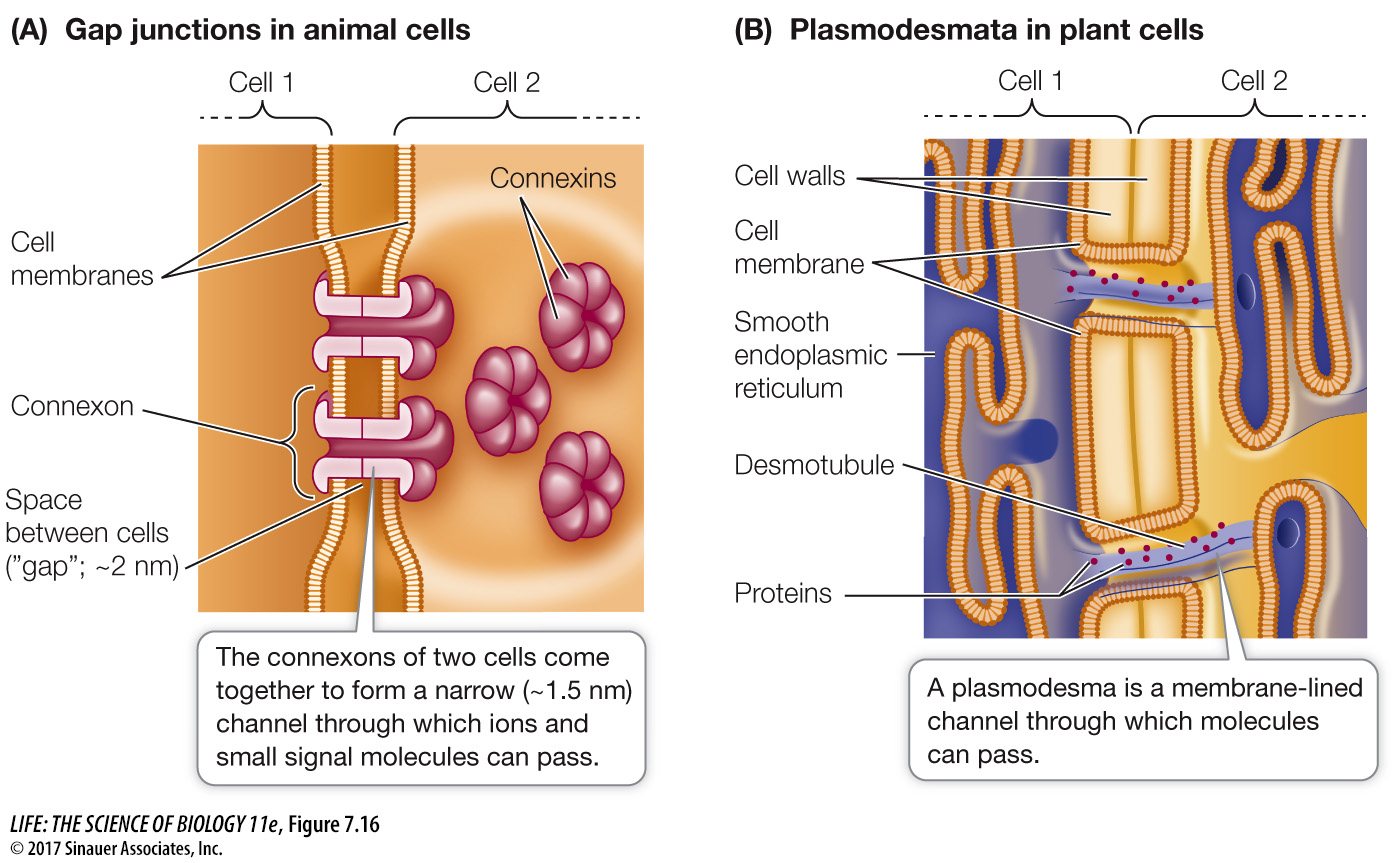How do animal cells directly communicate?
Gap junctions are channels between adjacent cells that occur in many animals, occupying up to 25 percent of the area of the cell membrane (Figure 7.16A). Gap junctions traverse the narrow space between the cell membranes of two adjacent cells (the “gap”) by means of channel structures called connexons. The walls of a connexon are composed of six subunits of the integral membrane protein connexin. In adjacent cells, two connexons come together to form a gap junction that links the cytoplasms of the two cells. There may be hundreds of these channels between a cell and its neighbors. The channel pores are about 1.5 nanometers (nm) in diameter—

Here is an example of gap junctions at work: In the lens of the mammalian eye, only the cells at the periphery are close enough to the blood supply for adequate diffusion of nutrients and wastes. But because lens cells are connected by large numbers of gap junctions, material can diffuse between them rapidly and efficiently. Hormones and second messengers can move through gap junctions. Sometimes just a few cells in a tissue have the receptor for a particular signal; in such cases, gap junctions allow a coordinated response to the signal by all the cells in the tissue.